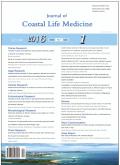Survey of parasites of two fish species (Tilapia zillii and Clarias gariepinus) in Ase River Catchment, Delta State, Nigeria.
引用次数: 2
Abstract
Tropical freshwater fishes such as Tilapia zillii (T. zillii) and Clarias gariepinus (C. gariepinus) serve as definitive/transport or intermediate host in the developmental cycle of many species of protozoan, metazoan and crustacean parasites[1]. Parasites are invertebrate organisms; some are free-living and can become opportunistic parasites while the obligate parasites require hosts for their survival and reproduction. Both opportunistic and obligate parasites are found in fish hosts but most parasitic diseases in fish are generally caused by obligate parasites[2]. In fisheries, some parasites may be highly pathogenic and contribute to high fish mortalities and economic losses or threaten the abundance and diversity of indigenous fish species[3,4]. T. zillii and C. gariepinus are the most common sources of protein for humans and other animals in the tropics[5-7]. Fish interacts with the various levels of food chain and influences the structures of rivers, lakes, streams and estuaries, since they are usually restricted to particular modes of life related to their food sources and reproductive requirements[8,9]. Like other animals, fish is also afflicted by endoand ectoparasites, especially protozoans and helminths causing heavy mortality[10]. Fish parasites and diseases constitute one of the most important problems confronting fish farmers today[11]. Pathological conditions resulting from parasites and diseases cause high magnitude of epidemics under crowded and other unnatural conditions[12]. The role of freshwater fish in transmitting parasites ARTICLE INFO ABSTRACT尼日利亚三角洲州Ase河流域zillii罗非鱼和Clarias gariepinus两种鱼类寄生虫调查。
热带淡水鱼类,如罗非鱼(T.zillii)和加里皮氏罗非鱼(C.gariepinus),在许多原生动物、后生动物和甲壳类动物寄生虫的发育周期中充当最终/运输或中间宿主[1]。寄生虫是无脊椎动物;一些是自由生活的,可以成为机会性寄生虫,而专性寄生虫需要宿主才能生存和繁殖。机会寄生虫和专性寄生虫都存在于鱼类宿主中,但鱼类中的大多数寄生虫病通常是由专性寄生虫引起的[2]。在渔业中,一些寄生虫可能具有高致病性,导致鱼类的高死亡率和经济损失,或威胁当地鱼类的丰富性和多样性[3,4]。齐利T.zillii和加里皮C.gariepinus是热带地区人类和其他动物最常见的蛋白质来源[5-7]。鱼类与食物链的各个层面相互作用,并影响河流、湖泊、溪流和河口的结构,因为它们通常被限制在与其食物来源和繁殖需求相关的特定生活模式[8,9]。和其他动物一样,鱼类也受到体内外寄生虫的折磨,尤其是原生动物和蠕虫,它们会导致严重的死亡[10]。鱼类寄生虫和疾病是当今养鱼户面临的最重要问题之一[11]。寄生虫和疾病引起的病理条件在拥挤和其他非自然条件下会导致高度流行病[12]。淡水鱼在传播寄生虫中的作用文章信息摘要
本文章由计算机程序翻译,如有差异,请以英文原文为准。
求助全文
约1分钟内获得全文
求助全文

 求助内容:
求助内容: 应助结果提醒方式:
应助结果提醒方式:


